Last Updated on March 30, 2023
Whether you’re washing sheets, or a polyester-filled pillow or comforter, the right detergent matters. Polyester is a synthetic material. And it is durable. But some chemicals and conditions can damage it.
In the past, you’ve probably just used whatever detergent you had in the laundry room. Right?
You may have also noticed that your pillows and comforters are lumpy. Likewise, maybe your microfiber sheets have pilled. The wrong detergent could be to blame. Or washing and drying incorrectly.
And possibly both.
Let’s talk about which type of detergents to use, and how to use them. And then we’ll go over the key washer/dryer settings.
Use Non-Chlorine Detergents
Where many people go wrong is by trying to bleach yellowed bedding. Pillows, sheets, and comforters all have some form of yellowing after being used. And bleach is usually the answer.
Stop using bleach on your polyester products!
Bleach is a corrosive material. It’s fine for cotton fabrics – but it eats away at polyester fibers. A common cause of lumpy pillows and comforters is from using bleach. The same goes for scratchy or pilled polyester (or poly blend) sheets.
Moving forward, only use non-bleach detergents when washing polyester fabrics.
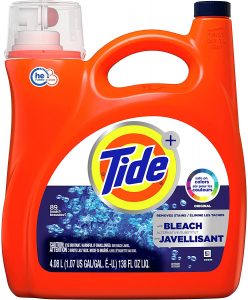
And if you have a high-efficiency (HE) washing machine, for example, make sure you’re using HE detergent as well.
HE machines use less water, which means the water in the machine is dirtier. HE detergent is formulated to trap dirt and loose dye, so it doesn’t end up back in your fresh laundry.
Don’t Use Fabric Softener or Dryer Sheets
You may have noticed the tag on polyester garments usually says no fabric softener. You may also have noticed that your polyester items feel tacky or sticky after a wash or two.
Fabric softener (both from liquid, and dryer sheets) tends to coat polyester fibers.
For sheets and other garments, that means a sticky or tacky surface. For the polyester filling inside of a comforter or a pillow, the result is a loss of fluffiness.
Moving forward, no more fabric softener when washing any type of polyester. Whether you’re washing pillows, comforters, sheets, clothing, etc. – no more fabric softener. Or dryer sheets.
But what about static cling?
Glad you asked! From now on, use wool dryer balls instead!
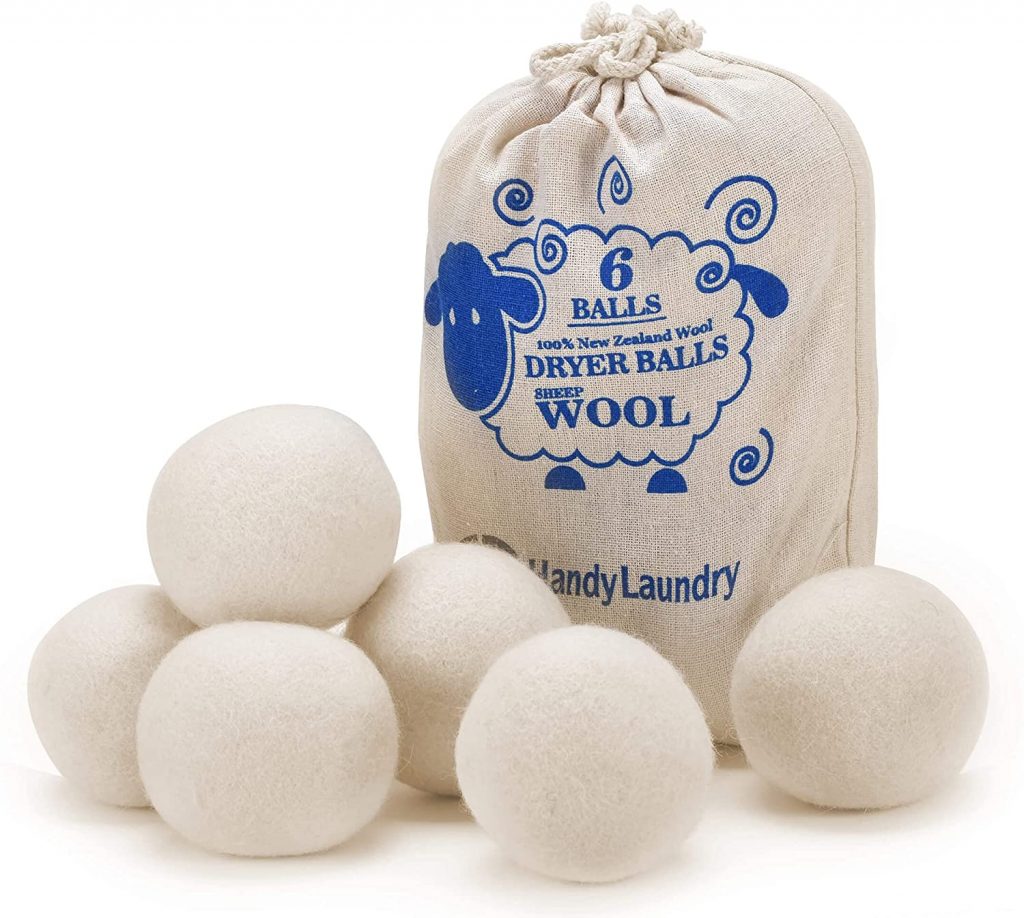
Wool dryer balls are made from 100% natural wool. Likewise, they have no added chemicals of any kind. They bounce around in the dryer and eliminate static electricity from your garments.
Depending on your machine, and the size of your load, you’ll probably need 3-6 balls. Just drop them in, and then turn your drying machine on.
That’s it!
Dryer Heat settings
We covered detergents and fabric softeners, now let’s discuss heat.
Polyester, specifically, does not handle heat very well. You may have noticed that your dryer says cotton next to the “hot” setting. While everything else says medium or low.
High heat both deteriorates polyester and makes the fibers stick together. Your lumpy pillows are most likely from being dried too hot!
Here’s how we do it…
Add a minimal amount of detergent. If your machine offers the option, then set it for two rinse cycles. This will ensure that all of the detergent is rinsed out.
Laundry detergent has a tendency to coat synthetic fibers. This results in lumpy and uneven spots.
Once clean, tumble dry on the lowest heat setting that your dryer offers. Newer machines will have an “air dry” or “no heat” setting. If your machine offers these, use them instead.
You might have to run your machine twice to get it fully dried, but it’s worth the wait.
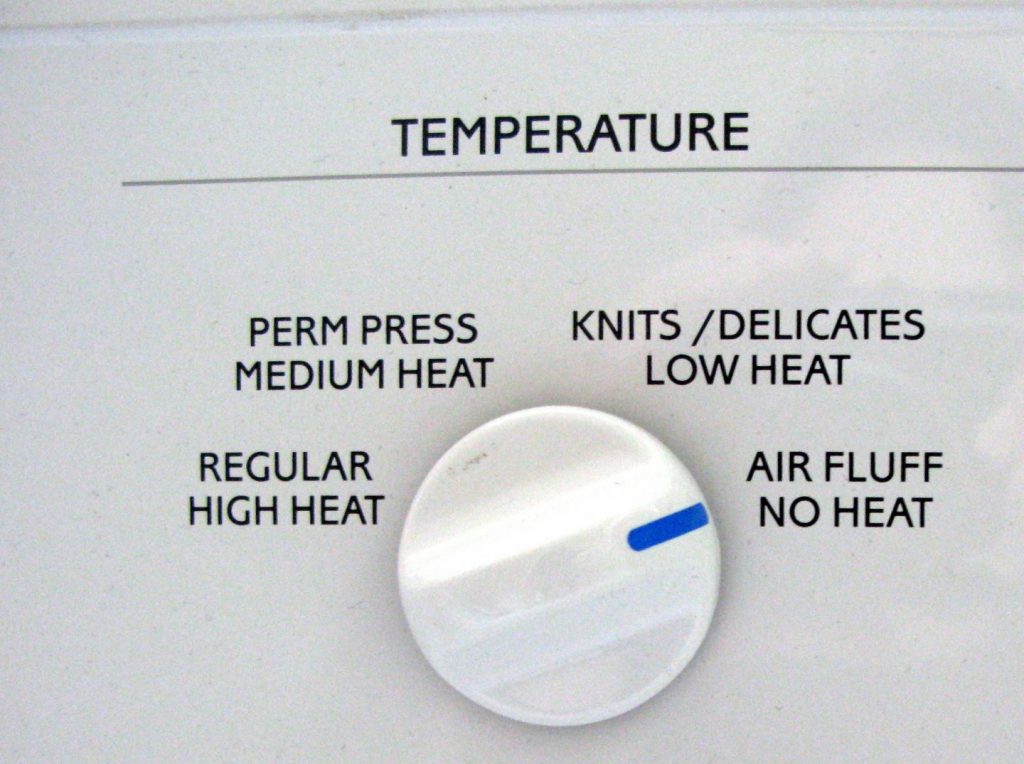
The low or no heat setting ensures that the polyester fibers don’t overheat. This way they stay in optimal shape. Pillows and comforters won’t clump. Sheets and other garments won’t show and wear.
A Little More About Laundry Detergents
Nowadays, there are about 20 major brands of laundry detergent. And every brand has 10 or more different product lines to choose from. Buying laundry detergent can be confusing.

Let’s take some of the confusion out of detergent shopping!
Form Factor
40 years ago, we only had powder detergent.
Now we have powder, liquid, and pods to choose from. If you don’t mind paying a bit more for convenience, for instance, go with the pods.
Otherwise, liquid detergent is just fine too!
Detergent Options
Here’s where things get a bit tricky.
Most brands today, for example, will have a “sport” or “performance” detergent.
Do you have modern gym clothes or activewear? The type that’s stretchy or full of spandex? The sport/performance detergent is designed for these types of garments.
Do you have a sensitivity to fragrances? The fragrance-free version is for you. Tide calls it “Free & Gentle”. The All brand has “Free & Clear”. Every brand has one.
The “big brands” will also have a [detergent] + [something extra]. Like Tide + Downy. Or Arm & Hammer + Oxi.
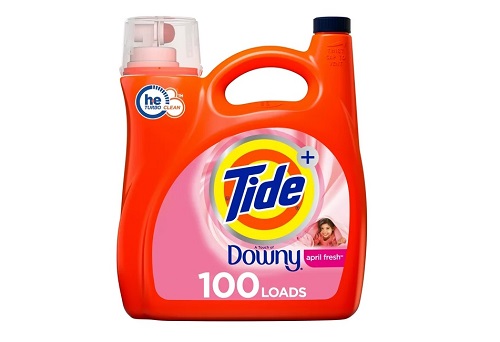
If you like the additive, great! But generally speaking, regular plain detergent is a better option. It’s kind of like shampoo + conditioner.
You’re always better off using each product separately, at the appropriate time. Right?
Finally, most detergent brands will have a specialty option for colored fabrics. This will often be labeled as “Colorguard” or something similar.
Colored fabrics, of course, are usually washed cold. So it can be difficult to remove certain stains, while also maintaining the vibrancy of certain colors.
Colorguard detergents keep vibrant colors vibrant, while also removing stains. They can also be used for whites as well!
There’s no “one size fits all” detergent.
If you have space in your laundry room, it’s nice to have a few detergent options to choose from. If not, the regular plain detergent is usually the best option.
A Few More Tips
Let’s go over a few more ideas to make everything more efficient.
Combine
Wash all polyester fabrics together.
If your laundry gets mixed, it can be hard to keep track of what’s what. Keeping all polyester items together, for instance, will ensure that they all receive the same treatment.
Load Large Items Correctly
Comforters are always washed alone. Likewise, pillows are to be washed 1-3 pillows at a time.
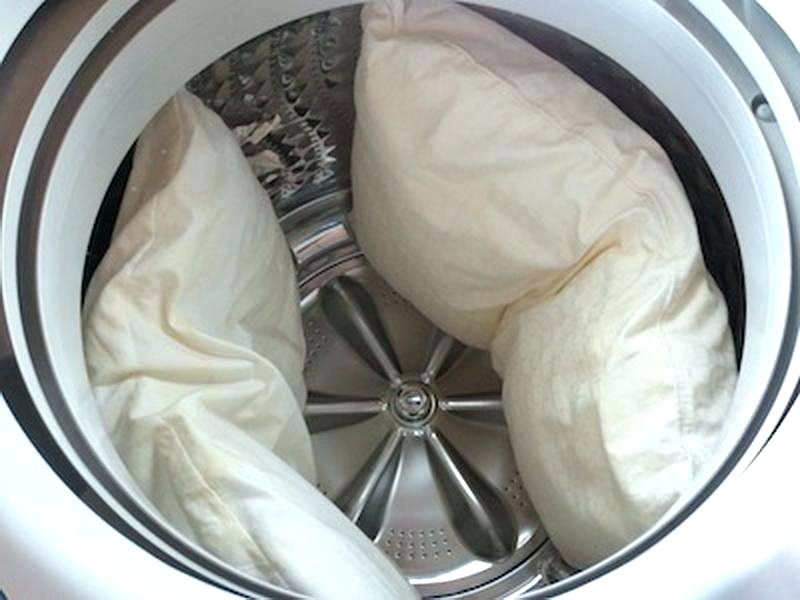
Skip The Tennis Balls
We’ve all heard the tennis ball trick when it comes to drying comforters and pillows. Skip the tennis balls, and use the wool dryer balls instead.
